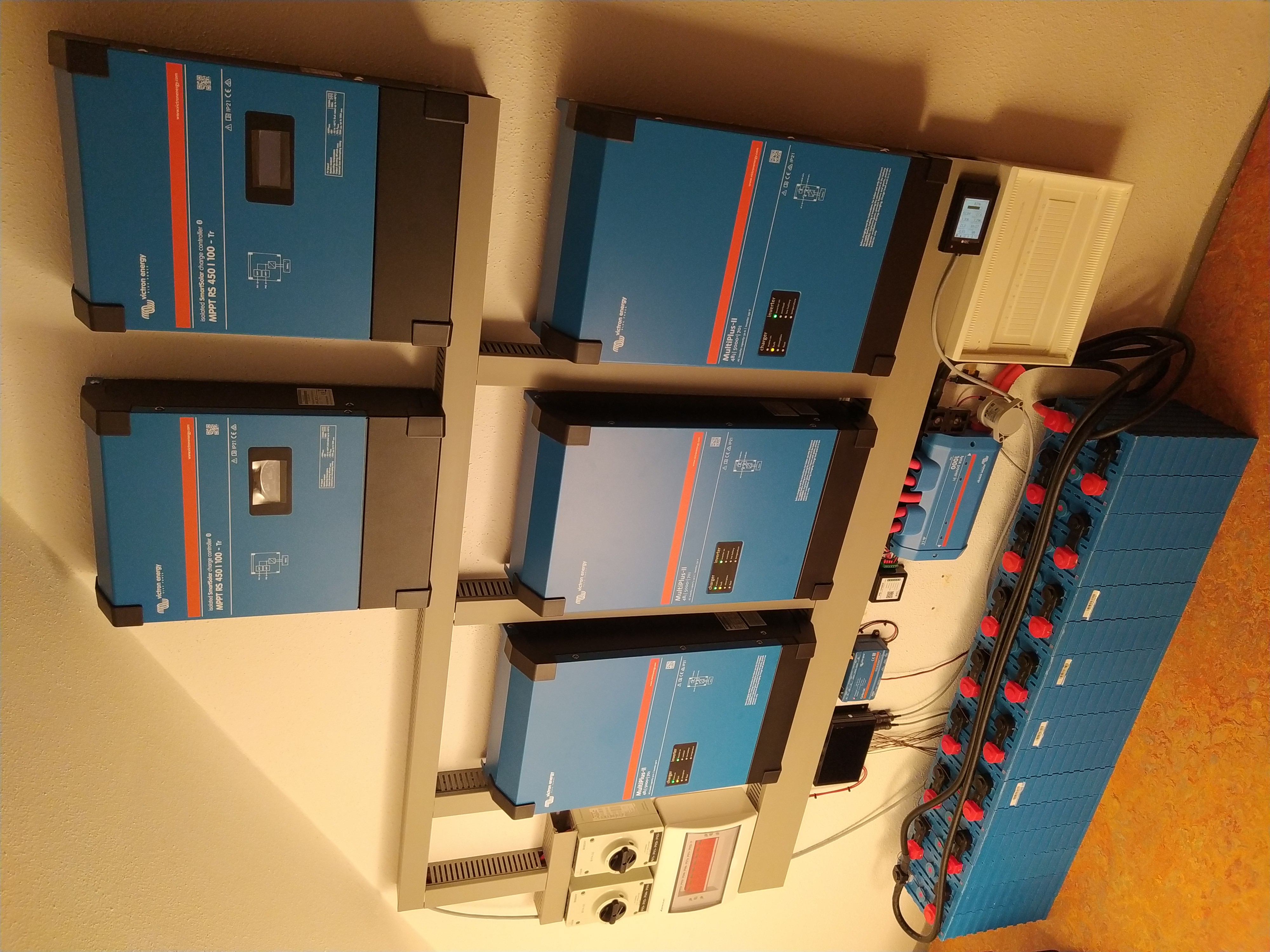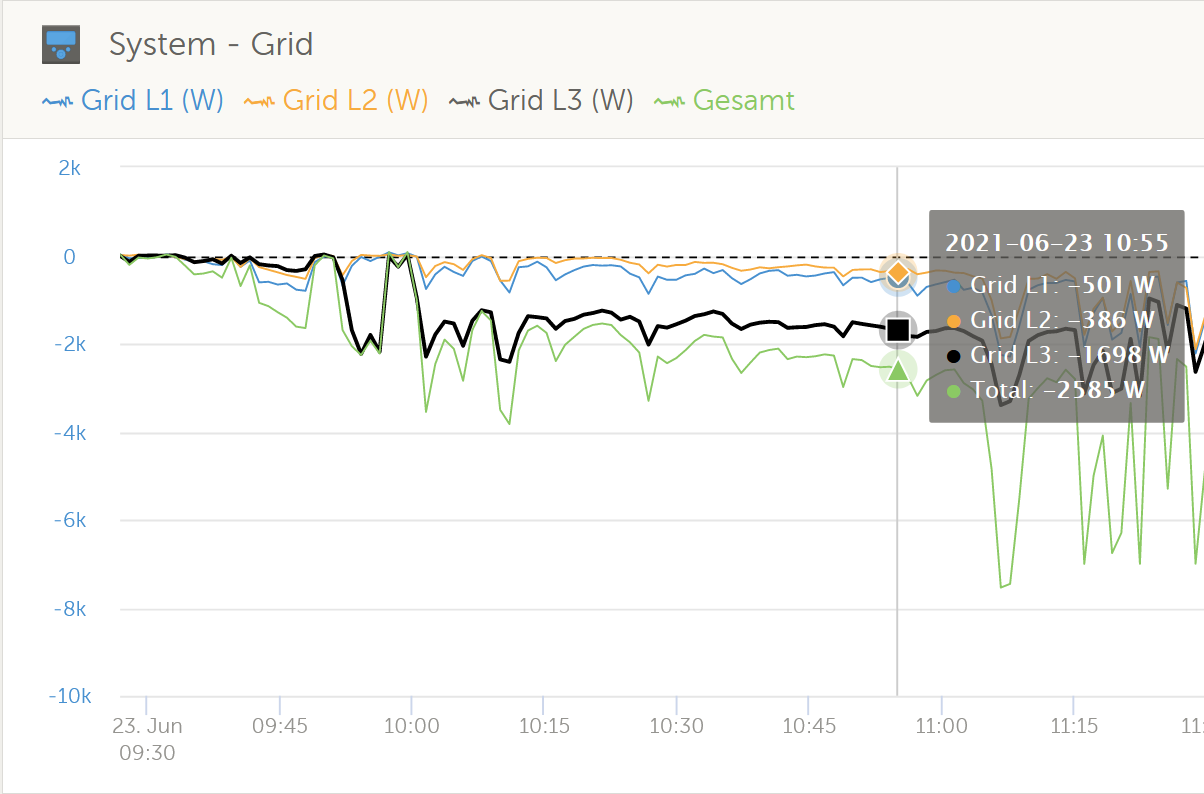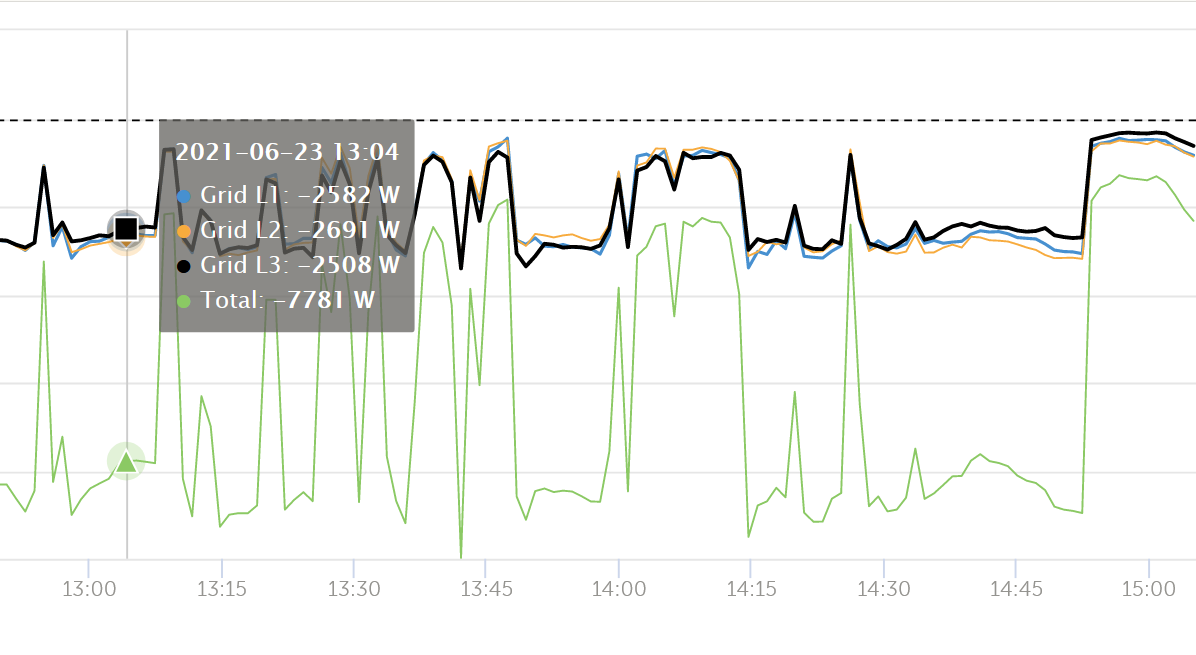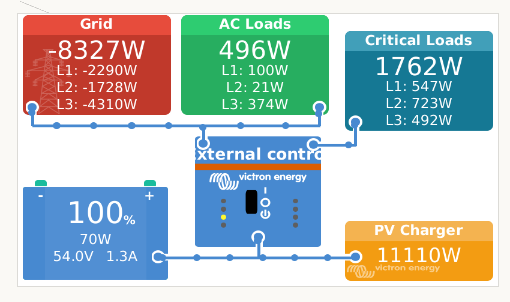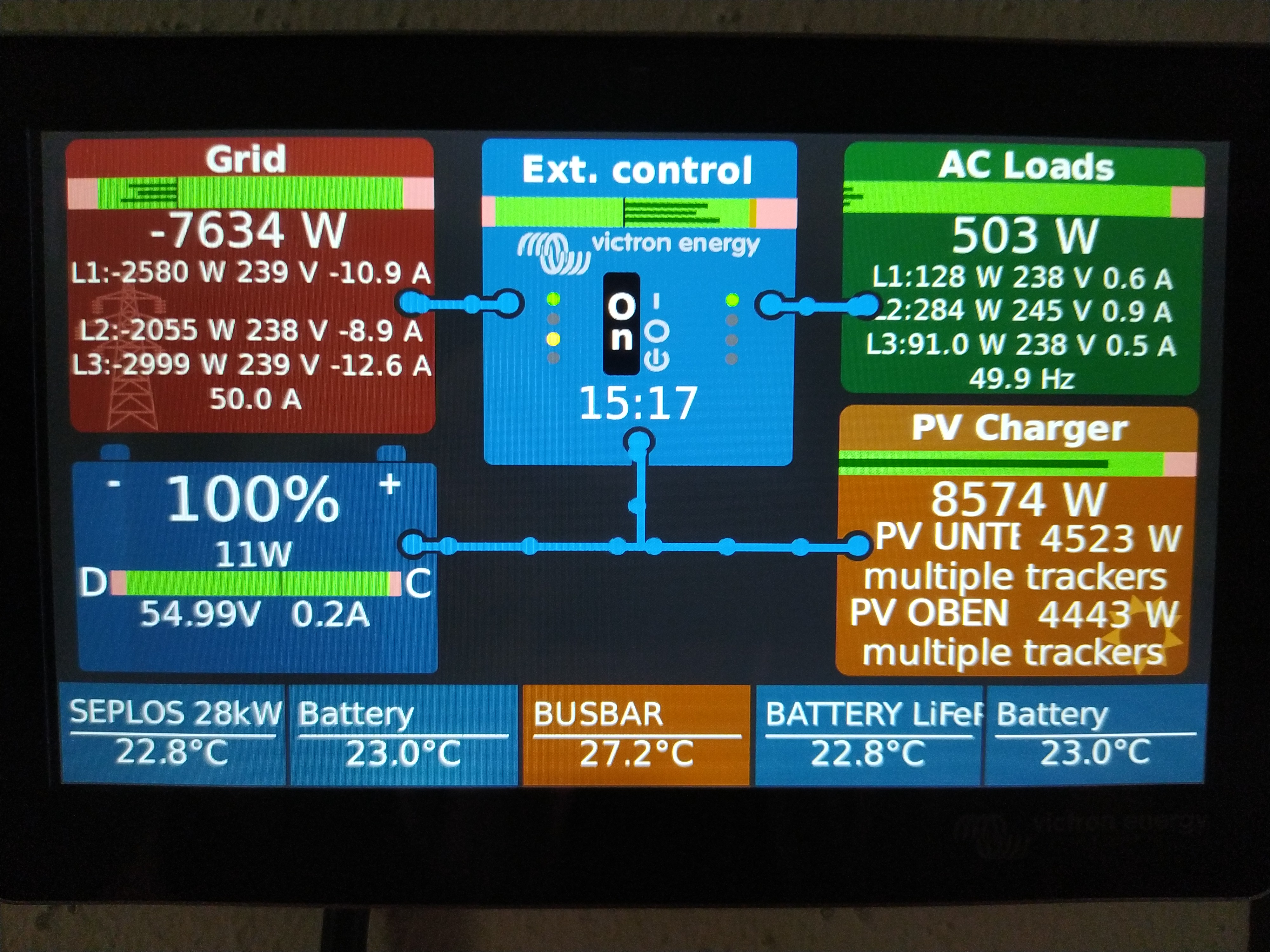I resently built a 3-Phase ESS System and hope to get some of my questions answered from the community.
The feed-in into the Grid is not always equally distributed over the Multis. Why is that?
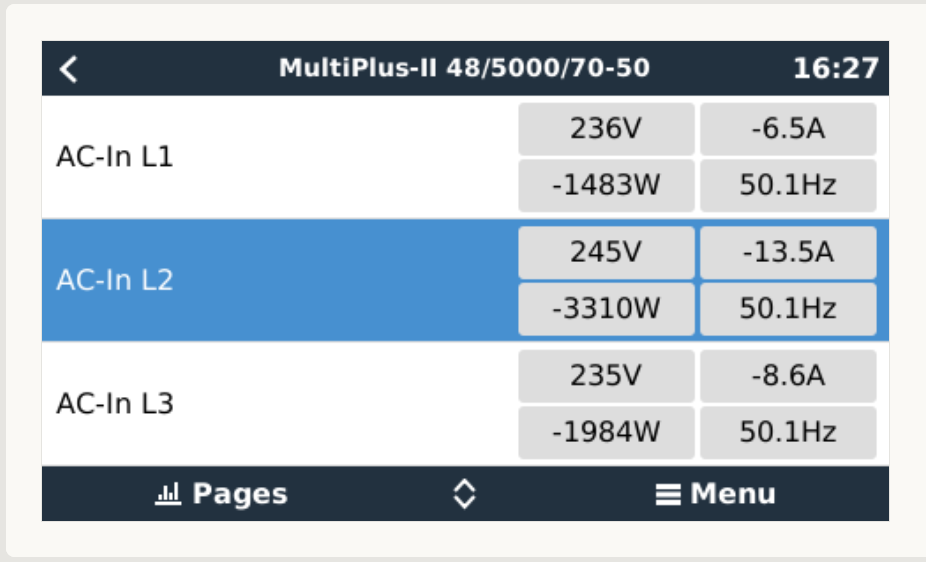
As you can also see in the Graph "System - Grid", there is more Grid feed-in on L2 then on L1 or L3.
35 minutes later, the MultiPlus-II for L3 feeds in more power then the other phases.
Can anybody explain that behavior? How is that internally controlled?
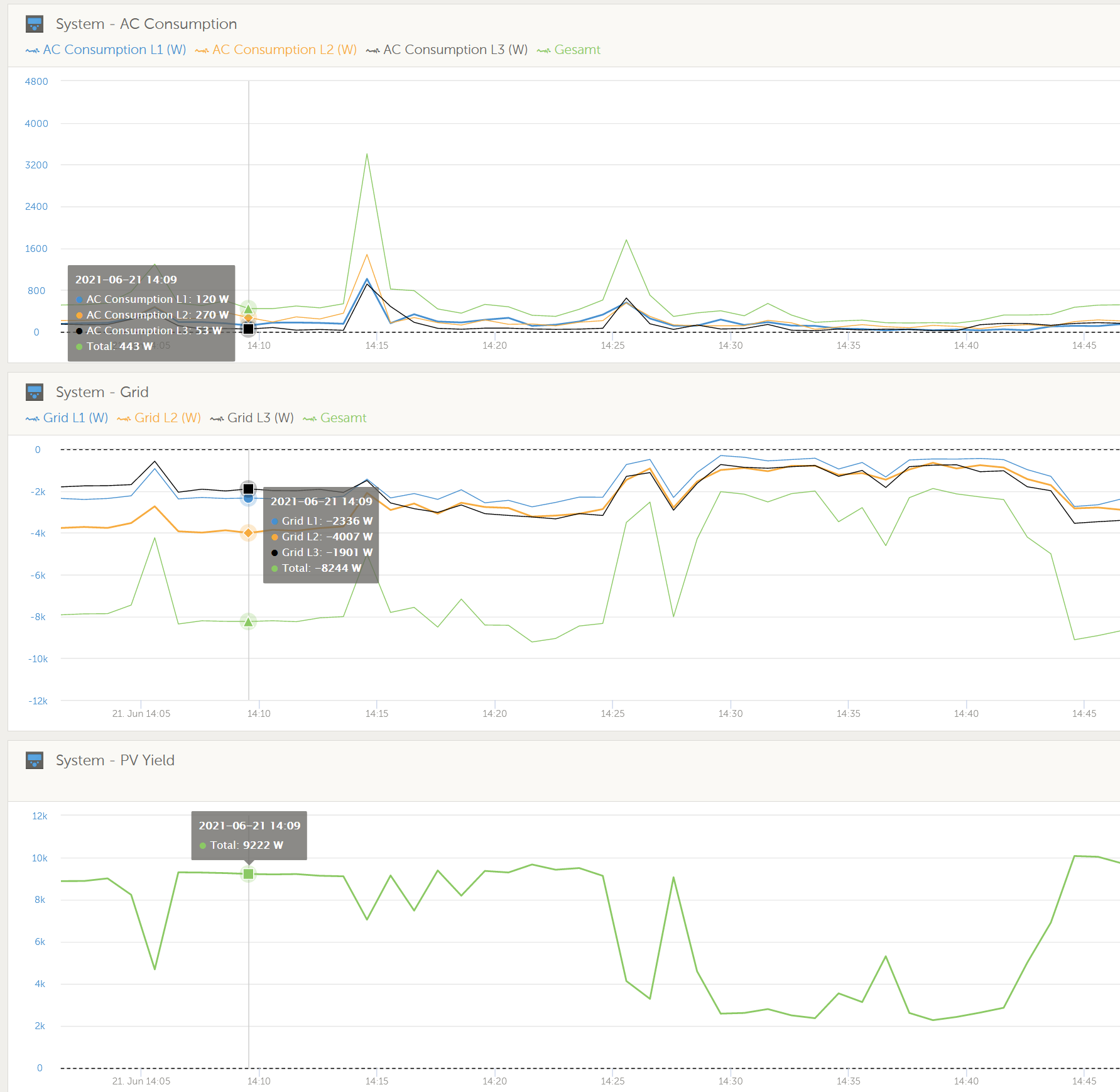 Grid feed-in: L1 -2336W, L2 -4007W, L3 -1901W
Grid feed-in: L1 -2336W, L2 -4007W, L3 -1901W
In the thermal image, you can also see the difference.
The efficiency is decreased by the unbalanced Grid feed-in distribution over the 3 phases.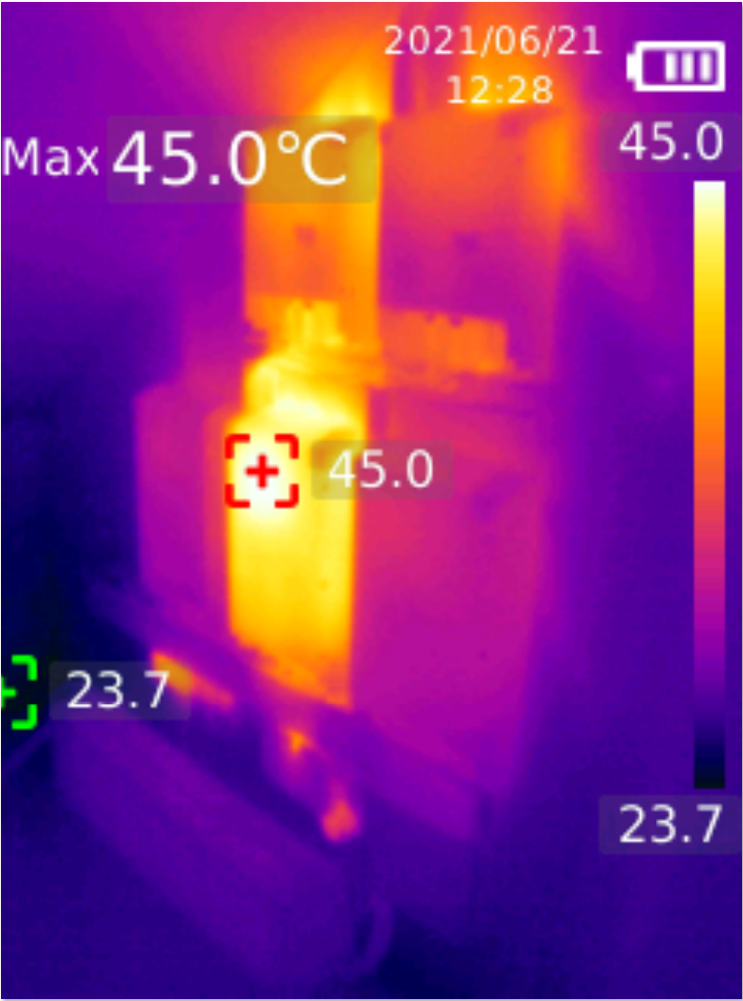
A equally balanced Grid feed-in, would increase efficiency and longevity of the whole system.
By the way...what is the design-life of the MultiPlus-II?
Does it make sense for longevity, to not feed into the Grid and only compensate for the loads in the house? In Summer I can easily produce 50kWh per day and I only consume 10kWh.
Does the lifetime decrease linear to the produced kWh?
Is the stress for the components higher without grid or while being connected to the grid?
Without grid, it sometimes go into overload on L2 while cooking...but not serious overload...just 5300VA.
With grid connected, it takes Energy from the grid instead...no compensation from the other Multis so far...I hope that true L1 + L2 + L3 = 0 phase compensation will be available in future.
(EDIT: A firmwareupdate of the Multis fixed all the issues. Thank you Victron Team!)
System components:
- 3x MultiPlus-II 48/5000/70-50 230V
- 2x SmartSolar MPPT RS 450/100-Tr
- Cerbo GX (Firmware v2.71-1)
- EM24-DIN Energy Meter Carlo Gavazzi
- REC-BMS with 16S LiFePo4 200Ah 51,2V 10,24kWh
- PV: 10,4kWp, 4 strings, each 8 Panels in series (Glas/Glas M60 Bifacial 325Wp Voc=40,22V)
